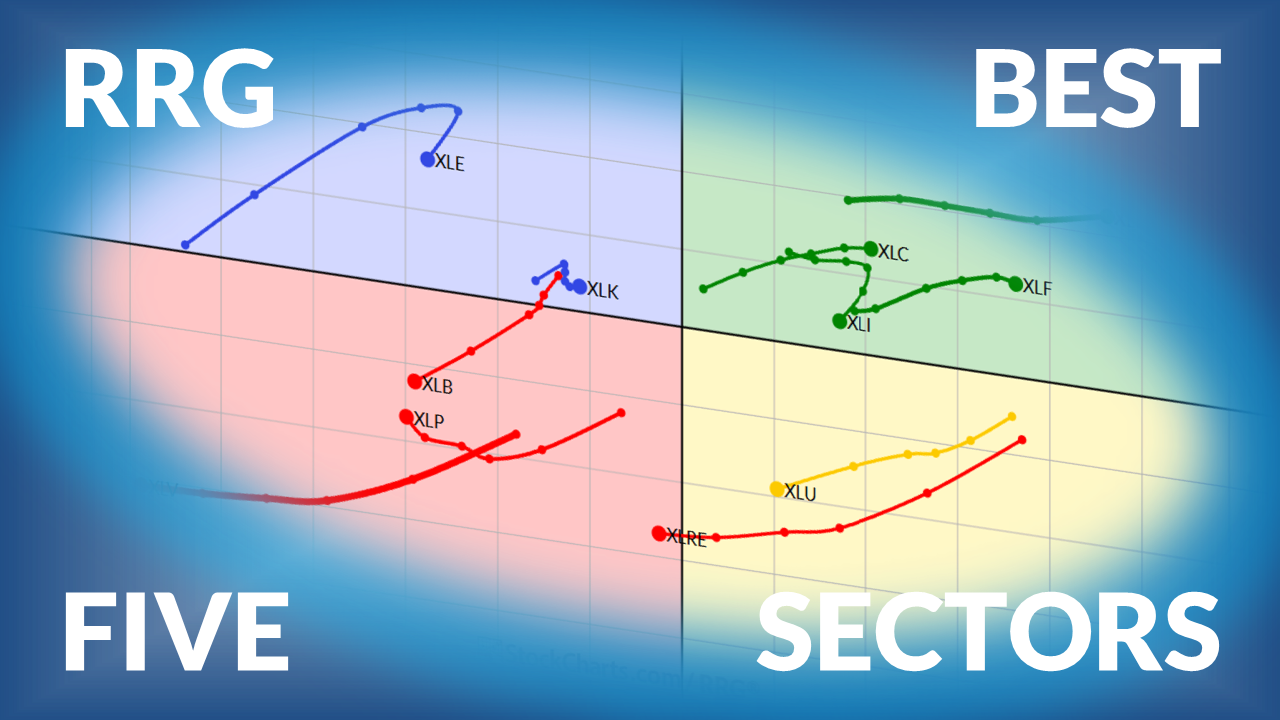TREASURY YIELDS CONSOLIDATE AHEAD OF BIG ECONOMIC WEEK -- STOCKS OUTPERFORM TREASURIES -- SPY CONSOLIDATES ABOVE BREAKOUT -- THE NOOSE TIGHTENS FOR THE RETAIL SPDR -- SHANGHAI COMPOSITE AND SENSEX INDEX TURN LOWER
TREASURY YIELDS CONSOLIDATE AHEAD OF BIG ECONOMIC WEEK... Link for today's video. It is a HUGE week on the economic front. The fireworks start on Wednesday with Chicago PMI and the FOMC policy statement. We then get the ISM Index, Jobless Claims and Auto-Truck sales on Thursday. The week ends with the Employment Report and Factory Orders on Friday. Needless to say, we could see some volatility in the second part of the week. The Treasury bond market will take front and center because Treasuries are the most sensitive to interest rates. Chart 1 shows the 10-year Treasury Yield ($TNX) consolidating after a big surge above 2.4% (24). This "watershed" breakout signaled a change in the Treasury bond market. Notice how the 10-year Treasury Yield plunged in the summer of 2011 as the market feared the worst. This fear is clearly subsiding as the 10-year Treasury Yield moves back to normalcy. A break above the July high would signal a continuation higher and target a move to the 3-3.2% area. With the Fed's dependency on data, a lot will depend on this week's economic indicators and Friday's employment report. Indications of economic growth and an improving labor market would be bullish for yields and bearish for Treasuries. Chart 2 shows a daily chart for reference.

(click to view a live version of this chart)
Chart 1

(click to view a live version of this chart)
Chart 2
STOCKS OUTPERFORM TREASURIES... Chart 3 shows the 7-10 year T-Bond ETF (IEF) breaking down in June-July and consolidating with a small rising wedge the last five weeks. A break below wedge support would signal a continuation lower and target a move to the 98-99 area. The indicator window shows the TLT:SPY ratio, which measures the performance of the 20+ Year T-Bond ETF (TLT) relative to SPY (Treasuries relative to Stocks). I am using TLT because longer-dated bonds are more sensitive to changes in interest rates than shorter-dated bonds. This is a very important ratio because it tells us where the money is flowing. Relative strength in stocks favors the risk-on trade. Relative strength in Treasuries favors the risk-off trade. Notice how the ratio peaked in May 2012 and moved lower as Treasuries underperformed stocks the last 13 months. This tells us that money is moving into stocks and out of Treasuries. Stocks hold the upper hand as long as they outperform Treasuries. Chart 4 shows a daily chart with first resistance marked at 103. An upside breakout in IEF and downside break in the 10-year Treasury Yield would be negative for stocks.

(click to view a live version of this chart)
Chart 3

(click to view a live version of this chart)
Chart 4
SPY CONSOLIDATES ABOVE BREAKOUT... Chart 5 shows the S&P 500 ETF (SPY) breaking above its May high and consolidating above this breakout. The big trend is clearly up because the ETF hit a 52-week high this month. New highs occur in uptrends, not downtrends. Despite a new high, the ETF was up over 8% from low to high last week. This tells us that the ETF is overbought and ripe for corrective period. At this point, the breakout is holding and the bulls are not backing down. Broken resistance from the May highs turns first support in the 167-168 area. A move below 167 would be short-term negative and argue for a retracement of the prior advance (156 t0 170). The indicator window shows MACD flattening out last week. The indicator remains above its signal line for now though. Further weakness below the signal line would also be short-term negative. Chart 6 shows the S&P 500 Equal-Weight ETF (RSP) with similar characteristics.

(click to view a live version of this chart)
Chart 5

(click to view a live version of this chart)
Chart 6
THE NOOSE TIGHTENS FOR THE RETAIL SPDR ... Last week I highlighted the consolidation brewing in the Consumer Discretionary SPDR (XLY). The retail group is an important part of the consumer discretionary sector and price action in this group will likely influence XLY, which in turn will influence the overall stock market. Enter the Retail SPDR (XRT). Chart 7 shows XRT with a surge from late June to mid July and a consolidation over the last two weeks. I am showing a 60-minute chart because it captures this extended consolidation quite well. The ETF has traded between 80 and 81.6 since July 11th. The pink lines show the Bollinger Bands narrowing as this consolidation extends. The indicator window confirms this narrowing as BandWidth moves below 2%. Volatility is clearly contracting. Bollinger theorized that volatility expansions follow volatility contractions. However, Bollinger Bands do not give us a directional bias. Chartists must turn to the price chart for a directional signal. A break above 81.6 would exceed the upper Bollinger Band and July highs. This in turn would argue for a continuation of the prior advance. A move below 80 would exceed the lower band and key support, which in turn would be short-term bearish. Chart 8 shows the Consumer Discretionary SPDR with similar characteristics.

(click to view a live version of this chart)
Chart 7

(click to view a live version of this chart)
Chart 8
SHANGHAI COMPOSITE AND SENSEX INDEX TURN LOWER... With some 2.5 billion people in total, China and India clearly have potential, but their stock indices remain in the doldrums and continue to underperform the S&P 500. Investors looking for an upturn in base metals, the Metals & Mining SPDR (XME) and related stocks, should keep an eye on Chinese and Indian equities for clues. Chart 9 shows the India Sensex Index ($BSE) hitting resistance in the 20250 area for the third time this year. Overall, the index is locked in a big trading range. A break above resistance is needed to forge a 52-week high and open the door to a bigger uptrend. Most recently, $BSE backed off resistance with a sharp decline the last four days. This means the short-term trend within the trading range is down and we could see a move to support again. The indicator window shows the India Sensex Index underperforming the S&P 500 from January to April and then performing inline the last three months. A break above resistance is needed to signal outperformance from this large emerging market.

(click to view a live version of this chart)
Chart 9
Chart 10 shows the Shanghai Composite ($SSEC) breaking down in June and then forming a triangle consolidation in July. The index broke the lower trend line with a sharp decline on Monday and this signals a continuation lower. Key resistance is set at 2060 and a breakout here is needed to put the bulls back in control. The indicator window shows the price relative moving to a new low this month. The Shanghai Composite has underperformed the S&P 500 the entire year.









